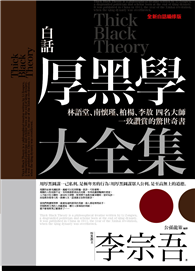By integrating principles from her background as a movement psychotherapist and movement analyst with key concepts from contemporary psychoanalysis, the author offers a new perspective on exploring the interrelationships between nonverbal and verbal “articulation” in any therapy setting.
The author starts by presenting theory from both disciplines, showing how the two perspectives can be “embodied” within a mutually supportive framework. She then applies a synthesis of movement analysis and psychoanalysis to several vivid psychoanalytic observational studies of infants and young children, with an in-depth focus on preverbal/nonverbal communication via the language of movement. The author then describes her clinical work with three adults, illustrating how the kinds of primitive psychophysical patterns highlighted in the observational studies are seen to underlie current issues her patients face in movement psychotherapy.
The book aims to provide a practical and experiential working model for developing therapists’ “embodied attentiveness,” which will enhance their recognition of the sensori-affective manifestations of transference and counter-transference. It will inform the work of psychotherapists and psychoanalysts, dance movement therapists, and body psychotherapists, as well as those involved in psychoanalytic observational studies. It will also be of interest to anyone interested in exploring the interrelationships between the psyche and the body.
| FindBook |
有 1 項符合
The Embodied Self: Movement And Psychoanalysis的圖書 |
 |
The Embodied Self: Movement And Psychoanalysis 作者:Bloom 出版社:Karnac Books 出版日期:2006-08-30 語言:英文 規格:平裝 / 14.6 x 22.2 x 1.9 cm / 普通級 |
| 圖書館借閱 |
| 國家圖書館 | 全國圖書書目資訊網 | 國立公共資訊圖書館 | 電子書服務平台 | MetaCat 跨館整合查詢 |
| 臺北市立圖書館 | 新北市立圖書館 | 基隆市公共圖書館 | 桃園市立圖書館 | 新竹縣公共圖書館 |
| 苗栗縣立圖書館 | 臺中市立圖書館 | 彰化縣公共圖書館 | 南投縣文化局 | 雲林縣公共圖書館 |
| 嘉義縣圖書館 | 臺南市立圖書館 | 高雄市立圖書館 | 屏東縣公共圖書館 | 宜蘭縣公共圖書館 |
| 花蓮縣文化局 | 臺東縣文化處 |
|
|
圖書介紹 - 資料來源:博客來 評分:
圖書名稱:The Embodied Self: Movement And Psychoanalysis
Your Mind and How to Use It - A Manual of Practical Psychology
The Senses and The Mind
The Morning of Spiritual Youth
Treatises on Friendship and Old Age: Letters of Marcus Tullius Cicero
Essentials of Religion
The Chosen People
Religion, A Dialogue
Pleasure and Profit in Bible Study
Infectious Diseases in Neurocognitive and Neuropsychiatric Medicine
Well-Being at School: A Social Problem
The Senses and The Mind
The Morning of Spiritual Youth
Treatises on Friendship and Old Age: Letters of Marcus Tullius Cicero
Essentials of Religion
The Chosen People
Religion, A Dialogue
Pleasure and Profit in Bible Study
Infectious Diseases in Neurocognitive and Neuropsychiatric Medicine
Well-Being at School: A Social Problem
|










